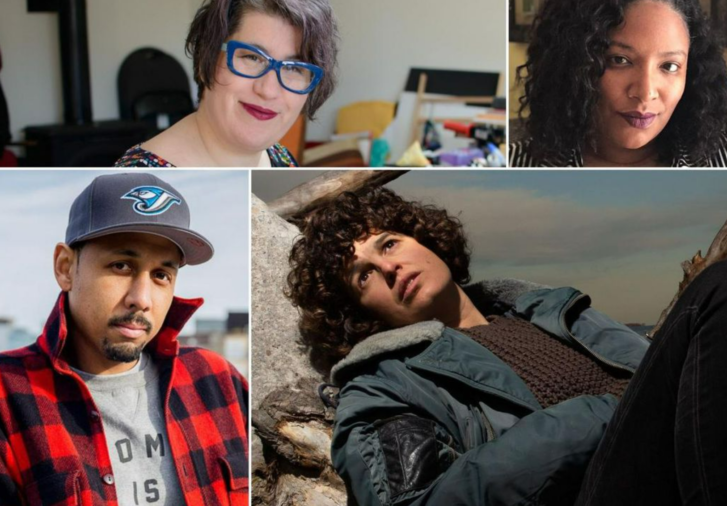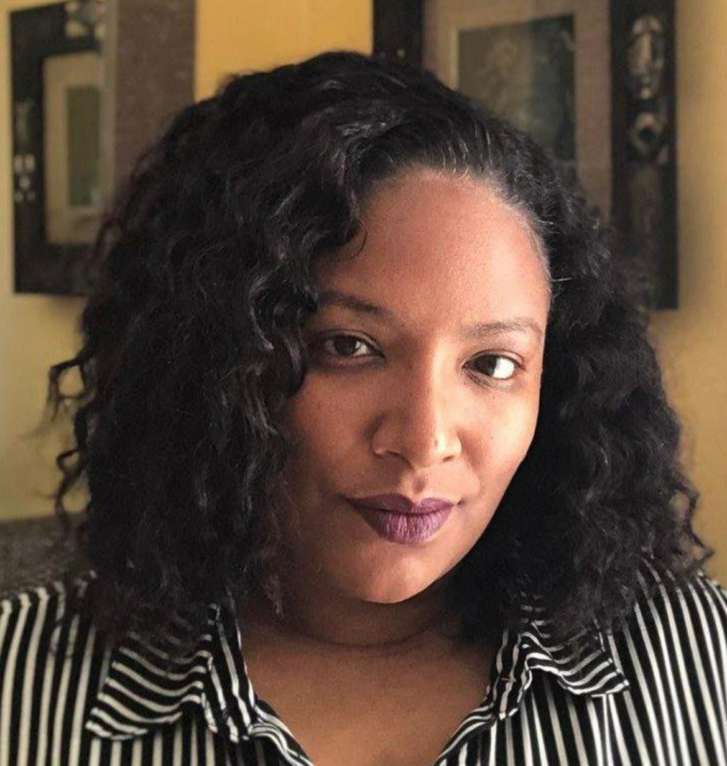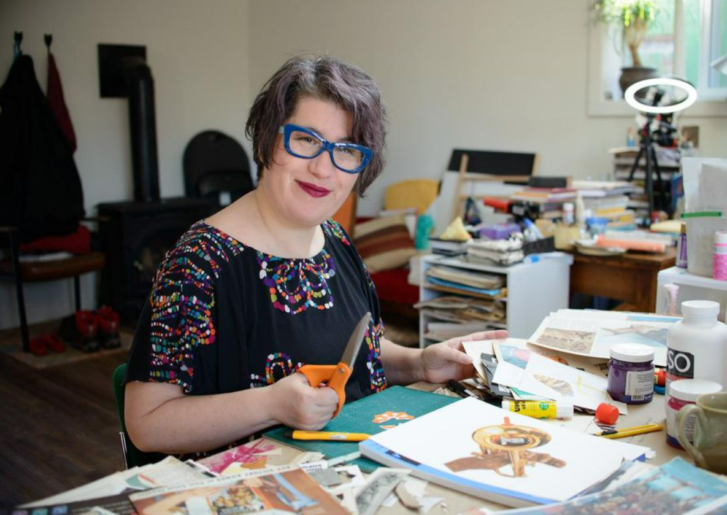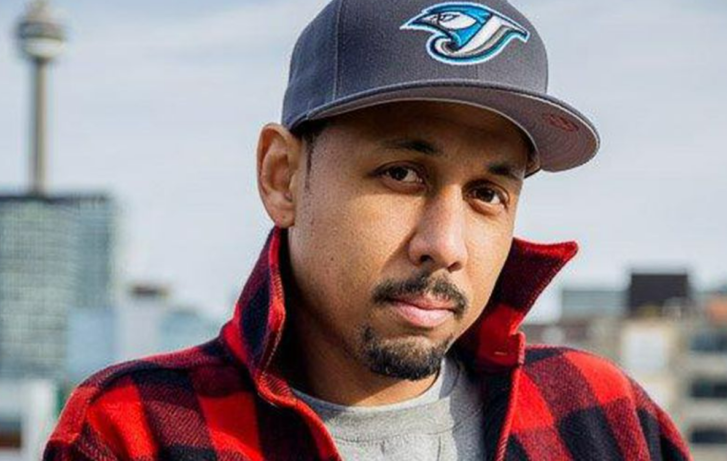Two years after the pandemic put a stop of live performance and other artistic endeavours, the artists are thrilled and relieved to land a six-month residency with arts and culture festival Luminato.
Almost two years after the pandemic put a stop to live performance and artistic and cultural endeavours of all kinds, five artists are thrilled to land a six-month residency with Luminato.

The arts and culture festival, which returns to the live in-person experience from June 9 to 19, offers a chance for its new residents to collaborate with other artists and explore their interests.
For some, it’s a chance to develop new projects, for others a timely lifeline after a long period financial struggle.

***
Ansley Simpson, an Indigenous singer/songwriter originally from the Alderville First Nation, calls the residency a “once in a lifetime opportunity.”
“To have a residency program in the city that I live in, that allows me to still take care of my daughter, that actually pays my bills and is on my traditional territory as an Indigenous person, I really couldn’t ask for more,” Simpson said. “There were a lot of tears when I actually found out I got the spot, good tears.”
After releasing her first album in 2018, work in the form of live performance with her band came to a shuddering halt. But Simpson used the time to take a long breather and to work in a studio producing long-form sonic pieces as well as film scoring.
“Performing comes with a lot of joy and pleasure, but it’s also quite stressful and exhausting. The amount of work that it takes to get your band ready, to get yourself ready, to get on stage and hold that energy in space is really exhausting. What I learned initially (during the pandemic) is that I was exhausted and needed a profound amount of rest,” she said.
Simpson’s next album, She Fell From the Sky — delayed by COVID — comes out in May, along with the return to live performance.
“I miss my band, I miss playing and getting that feedback from the audience. So I do look forward to that. Performing outside, that’s where I feel the most comfortable,” she said.
She plans to put the months ahead to good use.
“I hope to allow myself to actually be an artist without the worries of finances hanging over me. So I can go out and just explore the city with my sound recording equipment. Six months doesn’t feel like a lot of time, but it is a luxurious amount of time to an artist. I don’t know too many people who get an opportunity to just sink in and work on their passion projects.”

***
Costume designer Candice Dixon grew up in Scarborough and for her and her family, the Toronto Caribbean Carnival — once known as Caribana — was a joyous annual summer event.
“Carnival was always something that was very important to me, going down with my grandmother every single year, she was always super excited about it,” Dixon said.
But it was only after studying fashion and working in the corporate world for many years that Dixon decided to come back to her roots and become a full-time costume designer and carnival practitioner.
“I ended up working in corporate for a long time but never really felt connected to it. I worked for a huge company. There were 3,000 people in the company, and I was probably one of maybe 20 black people that worked there so I never really felt like I belonged,” Dixon recalled.
Dixon said she “fell into” costume design in 2010 and starting her own company, SugaCayne.
“I’d never thought about it. I always went to the Carnival and enjoyed it but I never thought that it was something that I could actually do. I remember that first year just being in the mas camp, which is where we actually design and produce the costumes, and the entire community comes in and you just become a part of the fabric of the community. I fell into where I belonged and who I am. I just fell in love with it from there,” Dixon said.
When the pandemic came along, she had to defer a plan to debut a band in the Carnival parade and find other work to make ends meet.
“It was hard, it put me in a dark place,” said Dixon, who’s taken her craft to events in Chicago, Miami, Trinidad and other places.
Dixon said the residency gives her “a chance to have a gig and to be with creatives again and an opportunity to connect. It’s been so hard to achieve connections over the last two years.”
“Collaborating is always something that means so much to me. I don’t do the art that I do in a silo. I work with groups of people and we bounce (ideas) off of each other. I’m just so grateful for this,” she said.

***
For Lisa Pijuan-Nomura of Hamilton, a queer multidisciplinary artist who counts storytelling, live performance pieces using movement and sound and collage art — using vintage materials — among her interests.
When the pandemic hit, Pijuan-Nomura was in hospital recovering from surgery.
“All of my work, which is art and performance, vanished overnight. We kept thinking it’s going to be one month, oh it’s going to be three months. Suddenly I found I had to pivot. The thing I learned is that we can do things that are hard,” she said.
That meant creating a website for the artist (who says she’s not tech savvy), organizing online arts and crafts shows and art shows for Mighty Braves, a group she founded that sells the artwork of young people ages 8 to 18, and even teaching online classes.
“I am able to do things that I never thought I could do. You just keep on going,” Piguan-Nomura said, adding she’s developed a new respect for the digital world, including Zoom.
“A lot of people talk about Zoom fatigue. I’m also aware that all these Zoom events have made it possible for people to attend events they may not have been able to attend. Even pre-pandemic, it’s been glaring obvious to me that there are some people who are not at the table who should be at the table. As I get older, I really want to support people of my generation,” said Piguan-Nomura, 50.
As for the residency: “A six-month gig, what a gift! To have six months of support from Luminato is actually life-changing. Working collaboratively with the team at Luminato and the other artists, it’s a gift,” she said.

***
Adeyemi Adegbesan returned to making art a decade ago, deciding to give up his career a commercial photographer about five years ago to become a full-time artist with a focus on creating digital art and painting — especially portraiture.
“I’d started to feel a little bit burnt out in that I didn’t feel that I could really express the ideas and talk about things that I wanted to discuss through that work (photography). I just decided to re-embrace all the things that got me excited and inspired me as a kid,” Adegbesan said, citing Black culture, comic books, fantasy and sports.
“A lot of those things didn’t have a home in what I was doing as a commercial photographer,” he added.
For Adegbesan, the pandemic fed into his innate desire to be “quiet and off radar.”
“I guess the pandemic gave me a little more time to reflect. It took a little bit of the pressure off of engaging and being visible. As an artist, there’s a lot of pressure to be visible and accessible all the time,” he said.
And while Adegbesan’s art — he’s entirely self-taught — has begun to provide him with a decent income, the residency presents a chance to mix with other artists.
“It’s exciting because I see it as an opportunity to do some learning and expand my horizons. That’s really cool because, as an artist, your primary focus is earning income. So a lot of personal development stuff can get de-prioritized. You don’t necessary have the time to step back to expand your knowledge base or try to learn new things,” he said.
As an artist, Adegbesan also wants to raise his voice on behalf of the Black community, one which has struggled to find a place in the arts world.
“It’s been a challenge as a Black artist, especially when I was starting out. I didn’t see a lot of representation in the arts institutions in the city for artists like myself. It’s been a challenge to find mentorship opportunities and people to offer advice and help,” Adegbesan said.
“Now I’m in a position where my practice is ongoing and self-sustaining, I want to be able to create opportunities for younger Black artists that are coming up,” added.

***
Viv Moore, a U.K. émigré, has been studying dance and movement since she first took up ballet at the age of 4. She has since studied jazz, tap, modern as well as other more exotic forms like butoh — a Japanese dance form — along with stage combat, including learning how to use a whip and a sword.
“I’ve been really, really eclectic in my creative choices. People can’t peg me and I quite like that. I like challenges, I like looking at different ways to improve my movement vocabulary,” Moore said.
“Is it tough making a living as an artist? It’s not tough, I think it’s virtually impossible. I’ve cleaned toilets, I’ve waited tables, I’ve erected scaffolding. I’ve done loads and loads of different things whilst doing gigs. Creativity never stops,” she said.
She’s performed internationally, worked as a choreographer and taught dance and movement at Humber College for 36 years before retiring last year, fed up with trying to teach via ZOOM.
“Those students were amazing but how can you see what someone’s body is doing in this tiny little box thing? Bless their hearts. I adored teaching,” she said.
To Moore, a residency at Luminato is “gold.”
“I’m so, so grateful to be gifted this. I could cry, it’s such an opportunity. In my 36 years of teaching at Humber, I’ve never had an offer of more than four months. They (only) do four-month offers,” she said.
“The staff are so supportive. I feel like I can just expand instead of being in this tiny little place I’ve been in. They said ‘dream big’ so I asked to meet Stevie Wonder,” she said, with a laugh.
Moore has only recently become comfortable disclosing her age and is determined to lend her voice and talents to creating a greater understanding of how society often makes older people feel “invisible.”
“I find it’s a pretty ageist society, especially for women. I realized several months ago I want to talk about so many things but that means saying a date. So I thought oh bugger that, I’ll just come out and say it and it feels actually kind of good. So I’m 70,” Moore said.
Article From: The Star
Author: Bruce DeMara

